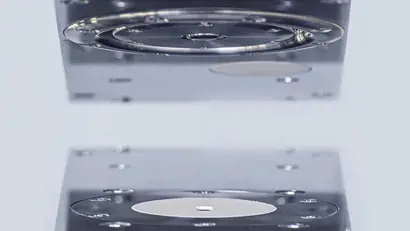Optical caliper measurement for IQ scanners
Valmet IQ Optical Caliper Measurement

The accurate scan averages and high-resolution CD profiles measured by Valmet IQ Optical Caliper Measurement (IQ Optical Caliper) provide a solid foundation for cross-direction caliper controls.
Improve reel build, winder and press room runnability with more even caliper
Achieve more accurate and stable on-sheet measurement with sub-micron resolution
Refined measurement technology ensures accuracy over a wide range of grades and machines

Accurate caliper measurements for challenging applications
The Valmet IQ Optical Caliper features an aerodynamic, ultra-light and heated reference plate design that is ideally suited for applications where mechanical measurements are limiting, such as recycled fiber and fast machines. The optical sensor uses extremely low contact pressure, eliminating the risk of marking and reducing breaks.
The paper web is stabilized to the reference plate without the pinching effect often experienced with conventional caliper measurements. You get excellent measurement accuracy with much better runnability and reduced waste. Even in challenging 100% recycled applications, the Valmet IQ Optical Caliper delivers consistent results comparable to laboratory measurements.
Intelligent design for best caliper readings
IQ Optical Caliper leverages two measurement techniques to deliver reliable, accurate data. The magnetic principle is used to measure the distance of the laser to a reference plate, and a no-contact laser triangulation principle is used for the distance to the paper surface. Caliper is determined from these two individual measurements.
The combination of the two principles in this design eliminates errors introduced by normal mechanical scanning tolerances. The paper web is stabilized to the reference plate using the Coanda effect to prevent passline variations and aerodynamical disturbances even at high machine speeds.
An automatic standardization and calibration procedure periodically adapts the sensor’s parameters to the environmental conditions and help ensure long-term accuracy and reliability.